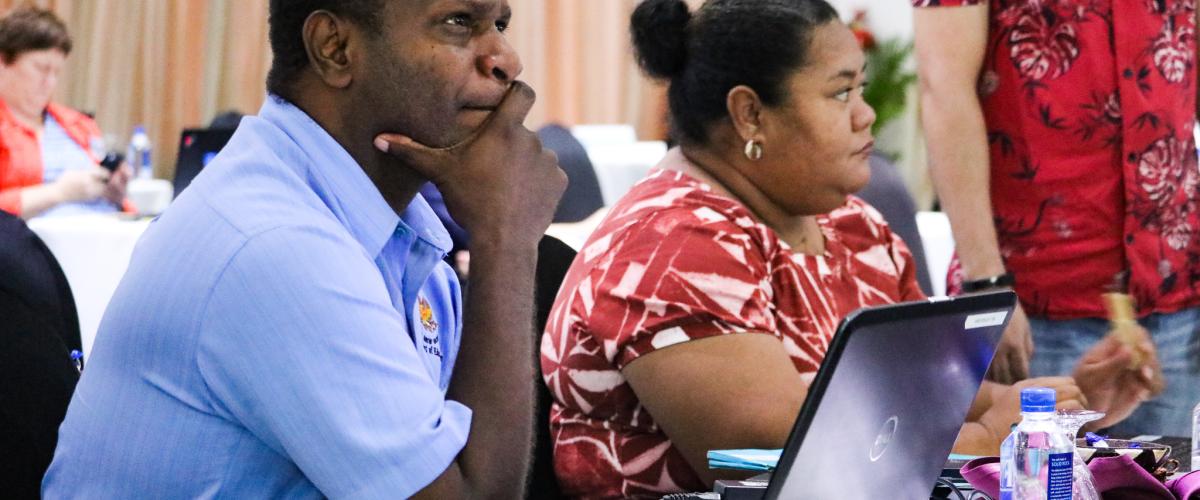
EQAP administers the Pacific's largest regional assessment of literacy and numeracy. The assessment is the Pacific Island Literacy and Numeracy Assessment, which is commonly referred by its acronym, PILNA.
The assessment focuses on the numeracy and literacy proficiency skills of Year 4 and Year 6 students. These are the skills that children need to progress through school and life, namely reading and writing, numbers, operations, measurements and data. PILNA essentially provides a measurement of regional standards based on a common scale. This gives the Pacific region valid and reliable results to inform on the improvement of student learning outcomes over time.
The longitudinal research is the most comprehensive study in the region as it involves at least 12 Pacific island countries in every administration. In the last cycle (2018), contextual data from Years 4 and 6 students, their teachers and head teachers was gathered and analysed alongside the assessment or cognitive results from 15 countries. All these data points (of about 7.5 million) painted a deeper understanding of Pacific students' performance in literacy and numeracy, and more.
The sheer magnitude of the PILNA study requires meticulous planning, preparation, execution and analysis. The entire cycle takes three years; from the brainstorming and testing of PILNA items, to its administration, and then the analysis and dissemination of results. PILNA was first administered in 2012. After three successful cycles (2012, 2015, 2018), EQAP is now in the early phases of administering the fourth cycle.
The findings of each cycle are shared with countries in presentations at various levels of the education system, including in data workshops in which representatives from the participating ministries are trained in the analysis and mining of PILNA data.
2023 Regional Benchmarks for literacy and numeracy
Reports
2021 PILNA
For the 2021 and later PILNA reports see https://pilna.eqap.spc.int.
2018 PILNA
The most recent PILNA assessment in 2018 is the largest regional education assessment to date. It was administered in 15 Pacific island countries to more than 40,000 students and 2000 teachers from 926 schools. More than 500 teachers and education officials were involved in the development, administration and coding of the assessment.

2015 PILNA
PILNA was administered in 13 countries in October 2015. More than 45,000 students in Year 4 and Year 6 in some 700 schools took part. This significant undertaking was made possible through the collaboration of Pacific Ministers for Education and their ministries, with the support of the New Zealand Aid Programme. The 2015 implementation was in response to the low level of student achievement that was identified in the first PILNA. The Ministers of Education in the Pacific wanted a re-run of PILNA to diagnose and monitor students' literacy and numeracy performance across the region. It was in this cycle that the literacy and numeracy baselines were determined.
2012 PILNA
The 2012 PILNA was administered in 14 countries to establish regional and national baselines in literacy and numeracy achievements after completing four and six years of primary education. The PILNA tools were developed from the component skills common to all countries in literacy and numeracy and these were outlined in the regional benchmarks. The benchmarks were approved to ‘be used to develop assessment instruments to measure the achievement of literacy and numeracy skills in the Pacific’.
For more information, email EQAP's PILNA team leader Torika Taoi on [email protected]
